St Mary’s of the Isle: The Dominican Friars in Medieval Cork/The Friary and the City
- Elaine Harrington
- October 15, 2024
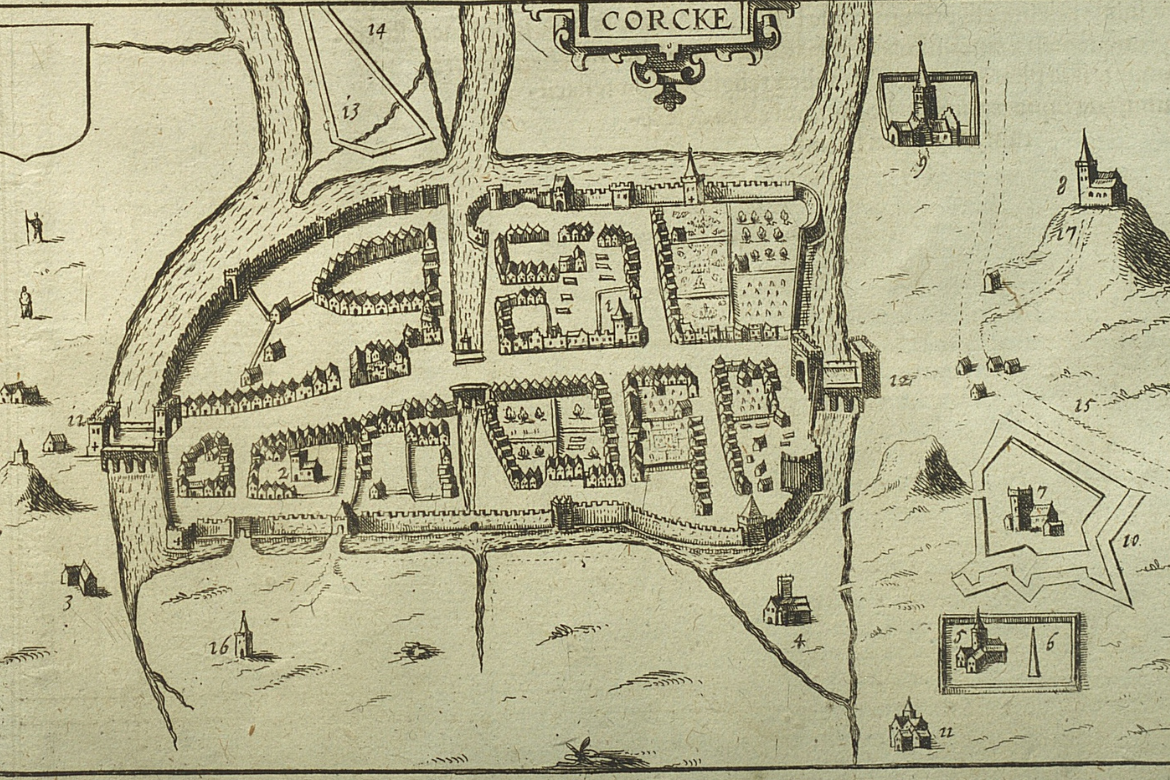
Student Exhibition, MA in History, HI6091
The Founding of the Dominican Priory
According to the seventeenth-century historian, James Ware (1594-1666), the Dominican friars established their house in Cork in 1229. The founder was Philip de Barra, who was memorialised by the brass effigy representing him on horseback, this effigy was possibly positioned above his tomb.

Philip de Barra, was most likely the son of the Anglo-Norman knight of the same name, Philip de Barra (fl. 1169–77); the latter arrived in Ireland in 1169 with the forces of his uncle Robert Fitz Stephen (c.1115–c.1185). Fitz Stephen was granted large areas of land around Cork as well as joint custody of the town itself, while Philip de Barra received three cantreds in Co. Cork.
Philip de Barra (fl. 1169–77) was also the brother of the famous Gerald de Barra known as Gerald of Wales (c.1146–c.1223). Gerald held less than favourable opinions about the island of Ireland and its inhabitants, which he described in his Topographia Hibernica (The Topography of Ireland) and Expugnatio Hibernica (The Conquest of Ireland), with neither painting the Irish in a flattering light. Gerald speaks of the Irish as ‘wild and inhospitable people’, who ‘live on beasts only and live like beasts’.
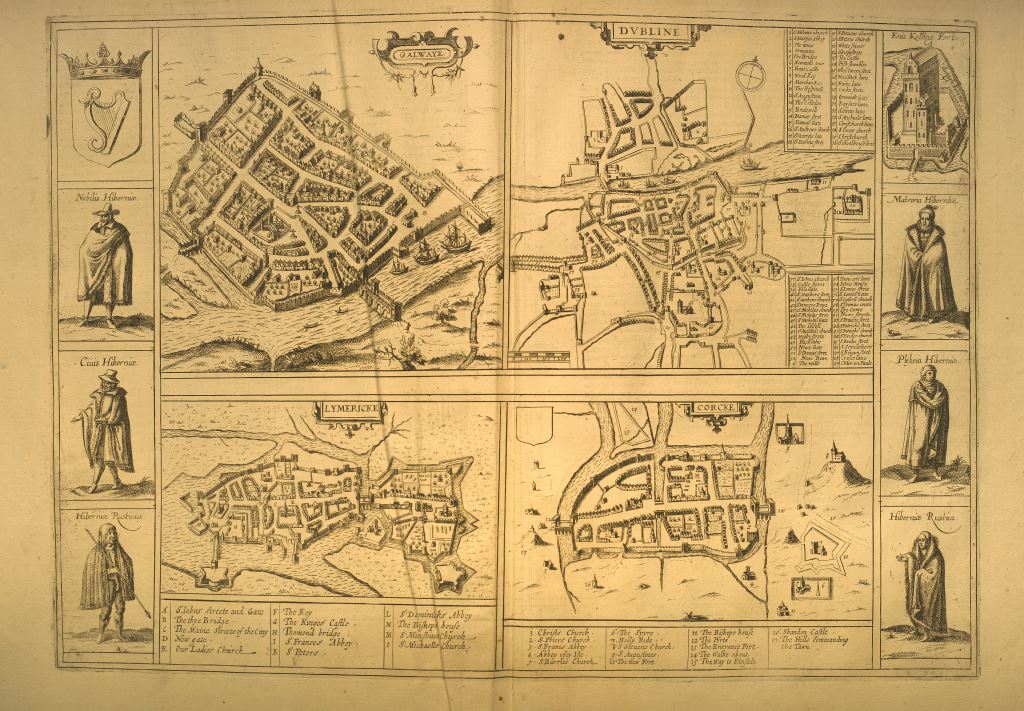
There had already been a settlement in the south side of the present-day Cork city centre dating to the Viking Age. The medieval layout of the city is reflected in the early modern maps, such as the map of Cork reproduced in the sixth and final volume of the Civitates Orbis Terrarum or Cities of the World, printed in Cologne in 1618, where the map of Cork features together with maps of three other Irish cities, namely Dublin, Galway and Limerick. Medieval Cork was relatively small, enclosed by walls and surrounded by waterways and marshland. It was intersected by one main road that span the length of today’s North Main Street and South Main Street.
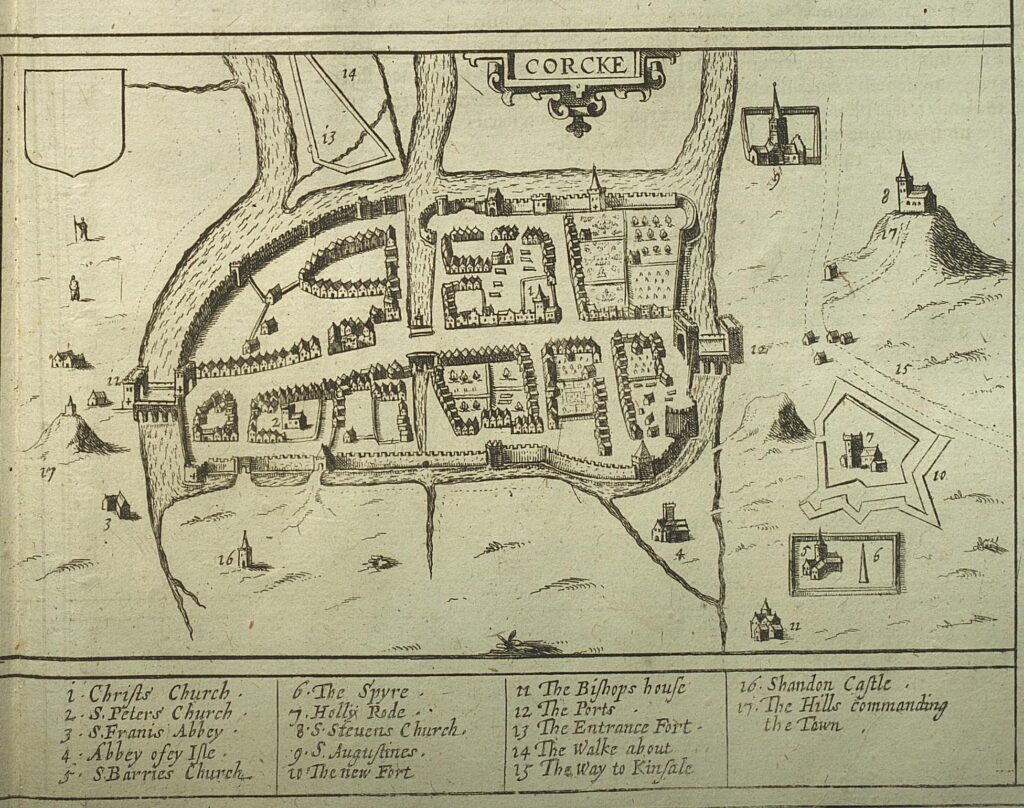
Image Alt text: Detail of Cork city map. North is oriented where west is usually placed. The title of the map is ‘Corcke,’ The map shows the walled city surrounded by rivers. Outside the walls are various churches and people not to scale. The buildings and map features are numbered and the key to to the buildings is under the map. Within the walls houses, trees and more numbered buildings are present.
According to the mid nineteenth-century source, Cork was once called ‘the five-isled city’, and it was on the island located to the south-west that the Dominican friars built their church. It was dedicated to the Virgin Mary, and the site became known as St Mary’s of the Isle.
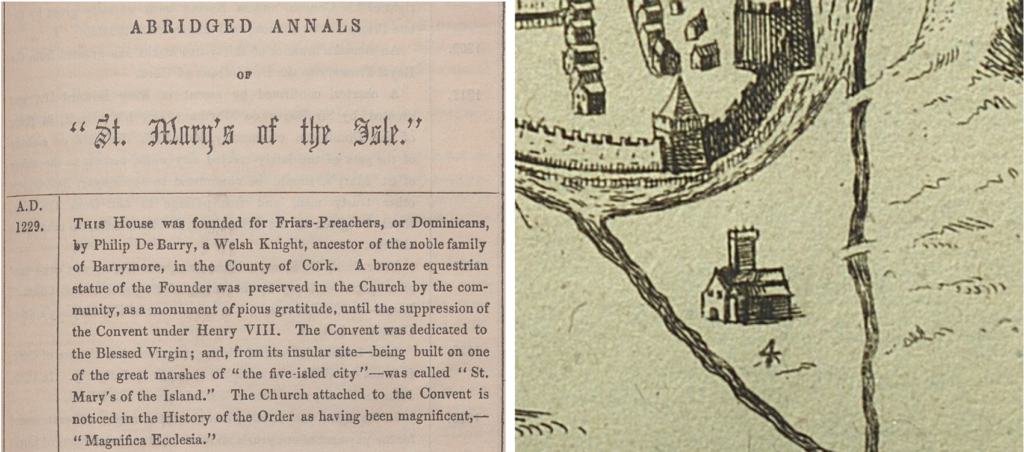
The Priory
Archaeologists date the fabric of the earliest Dominican church in Cork to the second quarter of the thirteenth century. The priory complex followed a typical mendicant layout as suggested by the 1993 excavations of the site. Early modern maps, although executed after the priory’s dissolution, preserve the memory of the building and show the church as a simple structure with a bell tower.
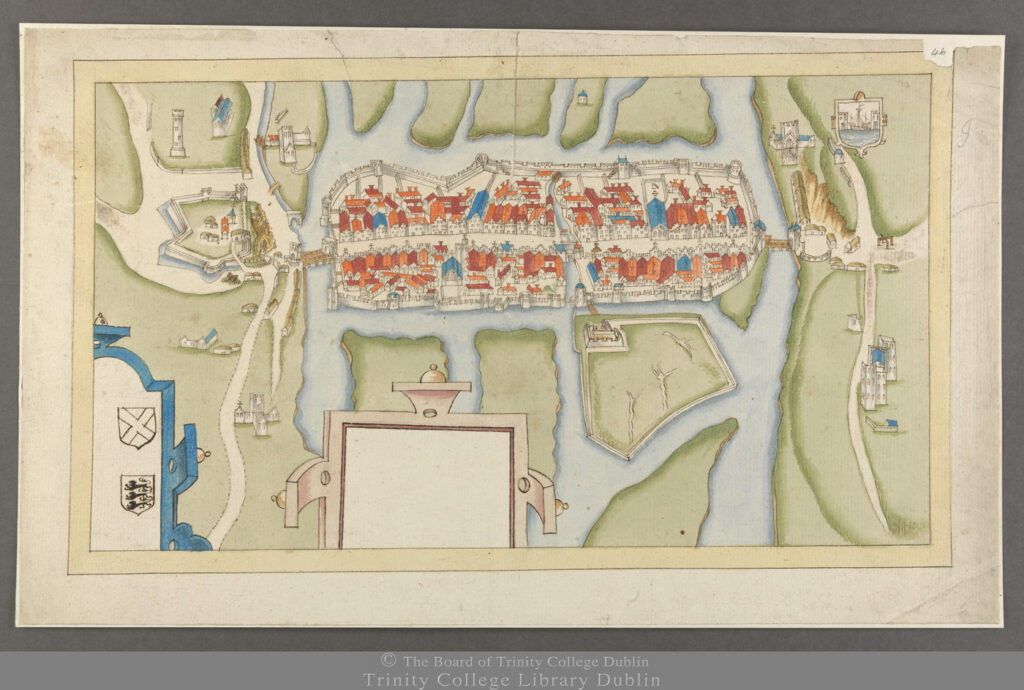
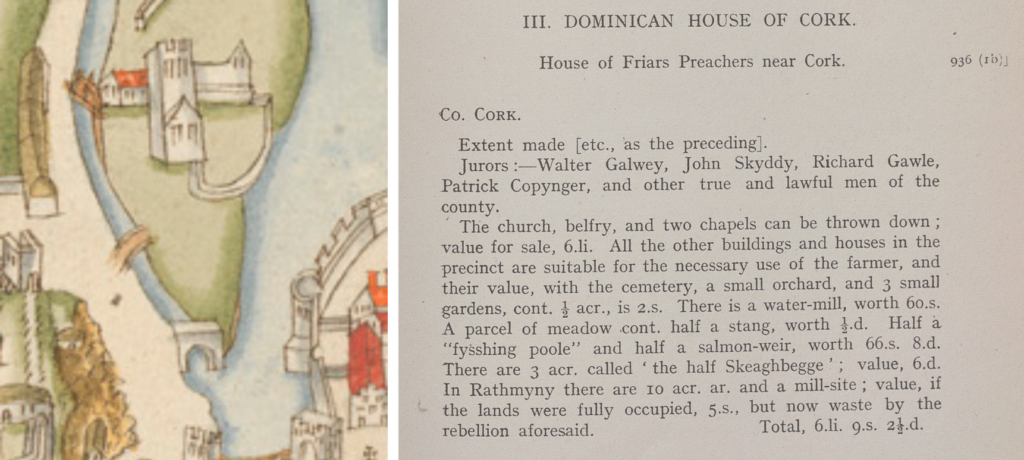
In the late fifteenth century Cork Dominicans accepted the Observant reform and by 1536 all Dominican communities in Ireland were united into a distinct province, separate from the English Province.

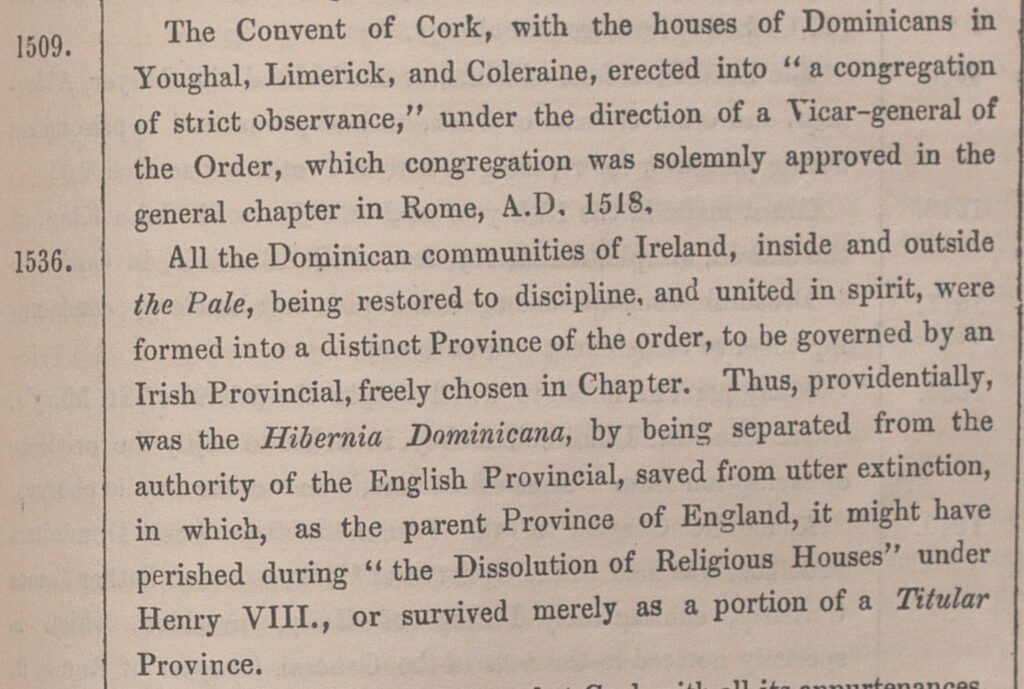
Following the dissolution of the monasteries under Henry VIII (1491-1547), the jurors reported that the church, the belfry and two chapels should be torn down, and the remaining buildings given to a farmer. One of the jurors was called John Skyddy. Interestingly, members of the Skyddy (Skiddie) family gave Cork thirty-two mayors between 1364 and 1589 and were associated with the small castle on the north side of the city.
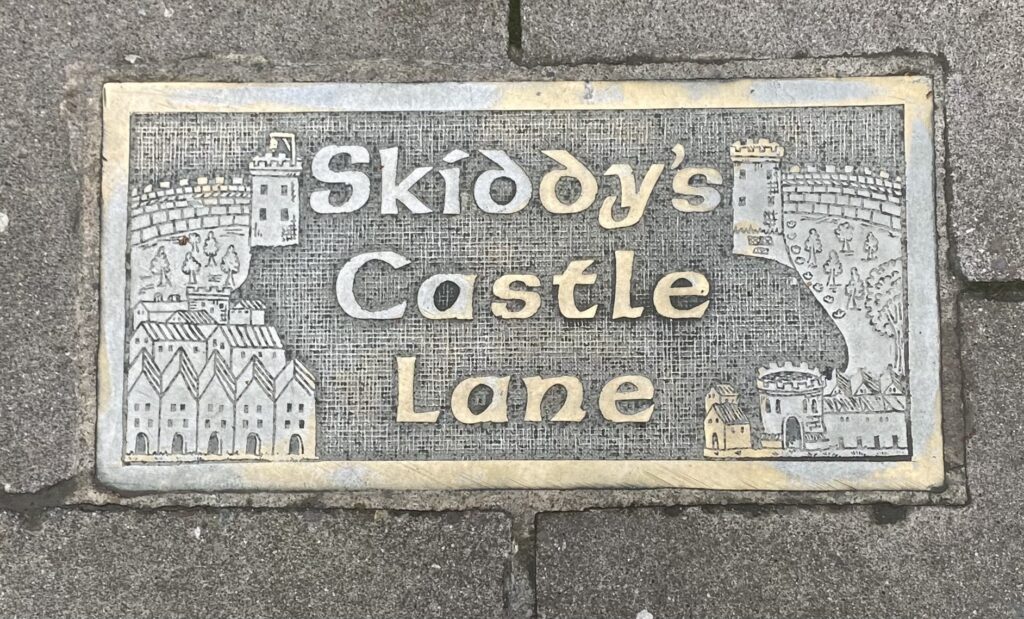
The priory comprised not only the church and living quarters but also some land. The dissolution documents, dated 1540-1541, mention that the friars had half a fishing pond, three small gardens, a watermill (which may be seen on maps), a meadow and ‘other lands’.
The Friars and the City
Although the priory was located outside the walls, it played an important role in the life of the medieval town. The location of the priory allowed the friars an easy access to beg and preach both inside the walls and in the wider hinterland. The early modern maps, including the Civitates Orbis Terrarum map of Cork, suggest that the friars had separate access to the countryside from their island.
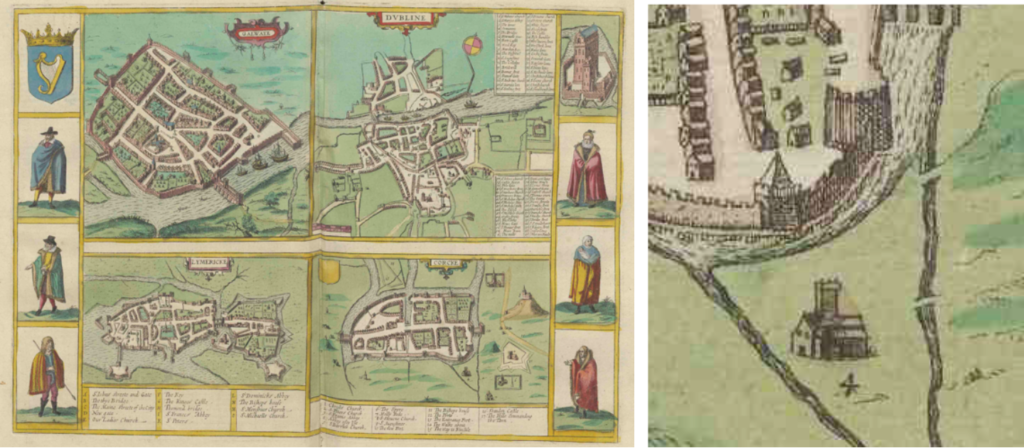
The medieval Dominicans in Cork were granted privileges, such as exemption from a fee, when entering the city through the South Gate, which was located in the vicinity of their priory. They were also in receipt of considerable royal support.
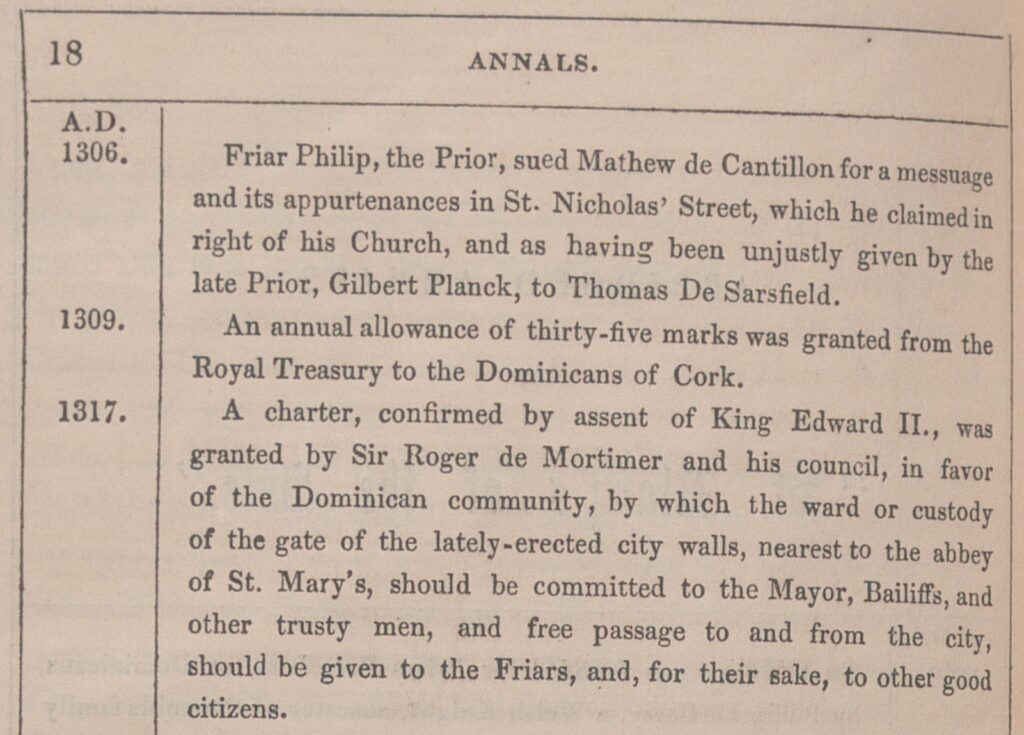
Edmund Mortimer (1352-1381), who was Lieutenant of Ireland, died in the priory at Christmas of 1381, allegedly after catching a cold while crossing a river. In 1377 Mortimer had been appointed to the minority council of Richard II (1367-1400) and in October 1379, he became Lieutenant of Ireland. Mortimer’s reluctant successor, John Colton (d. 1404), took his oaths in the Dominican priory.
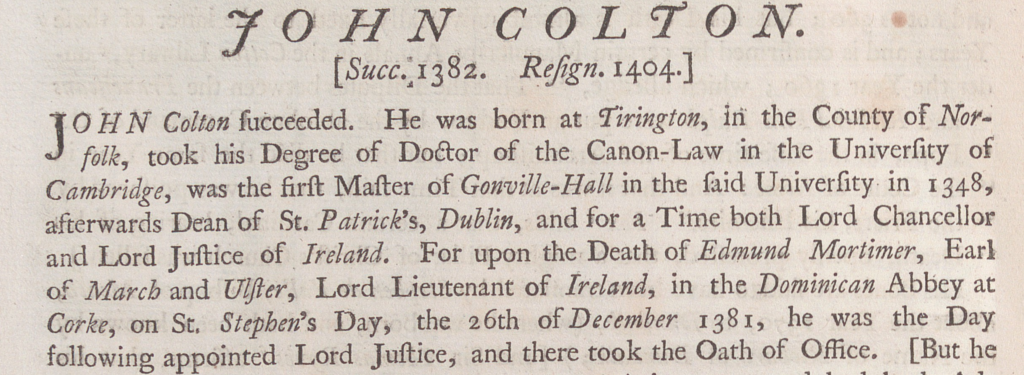
The priory also gained support from Cork merchants, as illustrated by the figure of John de Wynchedon, who is his 1306 will left a substantial amount of money to the friars. The will was written in the final days of John’s life as he was ‘weakening in body but sound of mind’. In his will, de Wynchedon provided funds for various religious foundations in Cork, including the Dominican house, where one of his sons was a friar. In total John donated eight marks to the Order of Preachers, these funds were to provide for the Order’s chapter meetings, sustenance and for saying Masses for his soul. The value of eight marks corresponds to approximately 3,800 euro of today’s spending value. The donation of such a sum suggests that the priory was certainly an important place to the people of Cork, and John de Wynchedon was possibly one of many wealthy Cork merchants who generously bequeathed their funds to the Dominicans and other religious establishments.
John’s will was witnessed by five men, amongst them were two Dominican friars, Thomas de Calle and William FitzAdam, and their presence demonstrates the active part the friars took in the lives of Cork’s citizens. A closeness of the Dominican friars to the higher echelons of the European society can be seen in a famous miniature from the Luttrell Psalter that depicts Sir Geoffrey Luttrell and his family feasting in the company of two Dominicans.
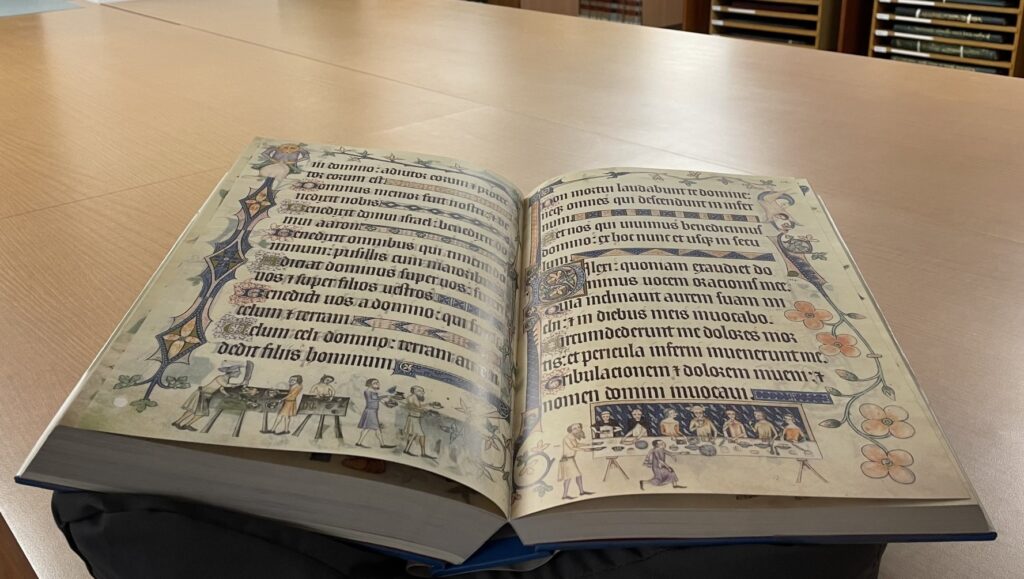
Some insight into the friars’ interaction with the wider population of Cork can be discerned from artefacts associated with the site of St Mary’s of the Isle. During the excavations of the site, over one hundred and fifty burials were found, many of these would have belonged to lay people, possibly wealthy merchants and nobility. For example, a fragment of an effigy dated to the early fourteenth century is now housed in Cork Public Museum; it represents a lay figure, someone of status, who was buried in the priory and was possibly a benefactor of the friars.
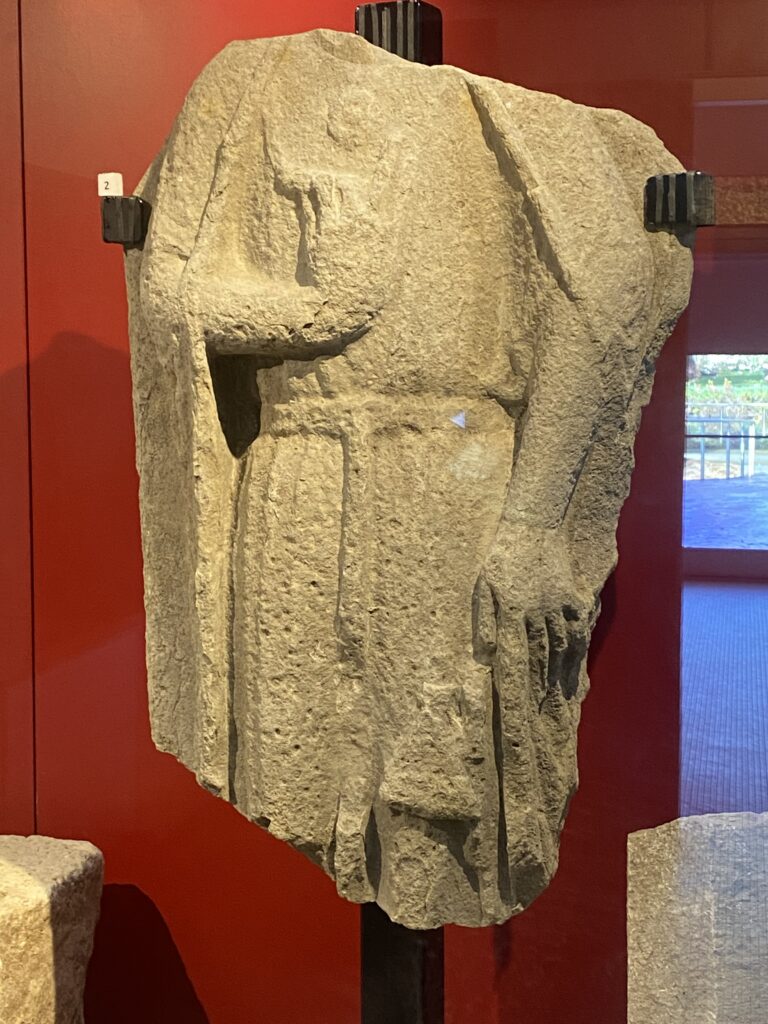
The Dominican friars would have served as preachers and confessors of Cork citizens, and the latter prayed in the priory’s church, expressing their devotions in front of the now-lost images of the saints. One of such images representing St Dominic (c. 1170-1221), the founder of the Dominican Order was burnt publicly in 1578, as recorded by the eighteenth-century antiquarian, Mervyn Archdall (1723-91) in his Monasticon Hibernicum.

Rosary beads found during the 1993 excavation of the site, now in Cork Public Museum, represent a material expression of devotions associated with the friars and their flock.
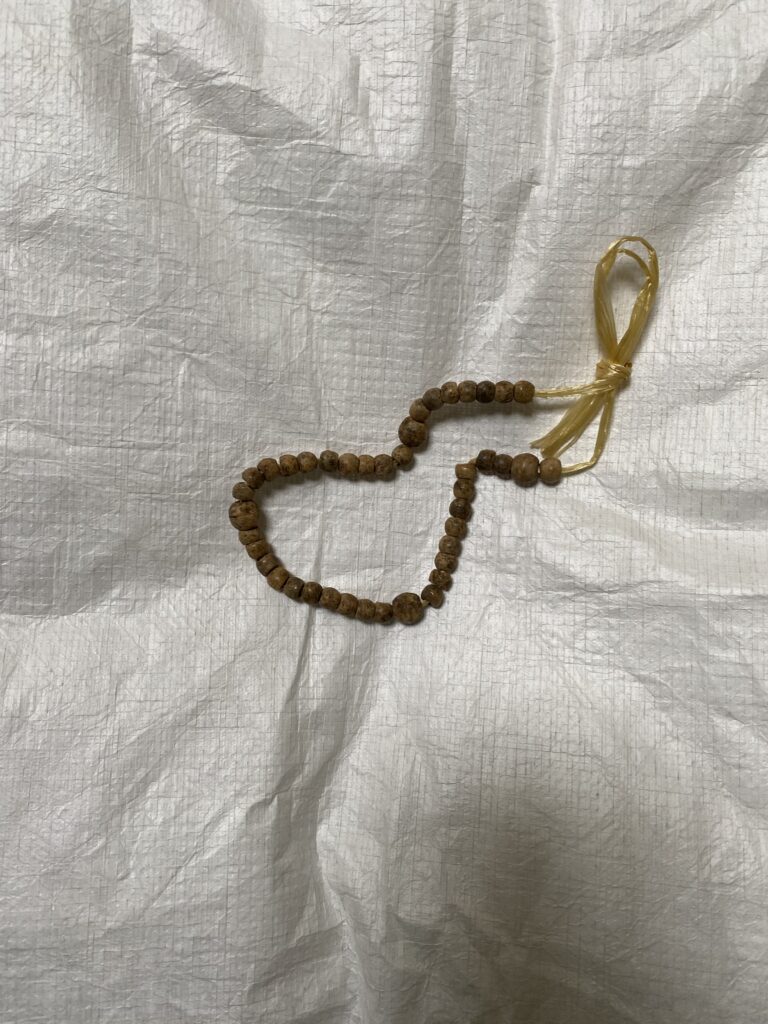
Thomas Jack McMullan
Further Reading
Bolster, Evelyn, ‘A Landgable Roll of Cork City’, Collectanea Hibernica, vol. 13, 1970, pp. 7-20.
Brett, Ciara, ed., Cork City’s Burial Places. A Study of the Cemeteries, Graveyards and Burial Places within Cork City, Cork: Cork City Council, 2011, pp. 46-47.
Doherty, Gillian, Dominicans in Cork City: A History, Carrigtwohill: Lettertec Publishing, 2024.
Flynn, Thomas, The Irish Dominicans 1536-1641, Dublin: Four Courts Press, 1993.
Gwynn, Aubrey and Hadcock, R. Neville, Medieval Religious Houses: Ireland, Harlow: Longmans, 1970.
Hurley, Maurice F. and Sheehan, Cathy M., Excavations at the Dominican Priory, St Mary’s of the Isle, Crosse’s Green, Cork, Cork: Cork Corporation, 1995.
McCarthy, Mark, ‘Geographical Change in an Early Modern Town: Urban Growth, Economy and Cultural Politics in Cork 1600-41’, Journal of the Cork Historical and Archaeological Society, vol. 106, 2001, pp. 53-78.
O’Driscoll, Liam, ‘Viking Cork: A Case Study in Objects and Text’, The River-side blog.
Ó Clabaigh, Colmán, The Friars in Ireland, 1224—1540, Dublin: Four Courts Press, 2012.
O’Sullivan, Denis, ‘The Testament of John de Wynchedon of Cork, Anno 1306’, Journal of the Cork Historical and Archaeological Society, vol. 61, 1956, pp. 75-88.
White, Newport B., Extents of Irish Monastic Possessions 1540-1541, Dublin: Stationery Office, 1943.
